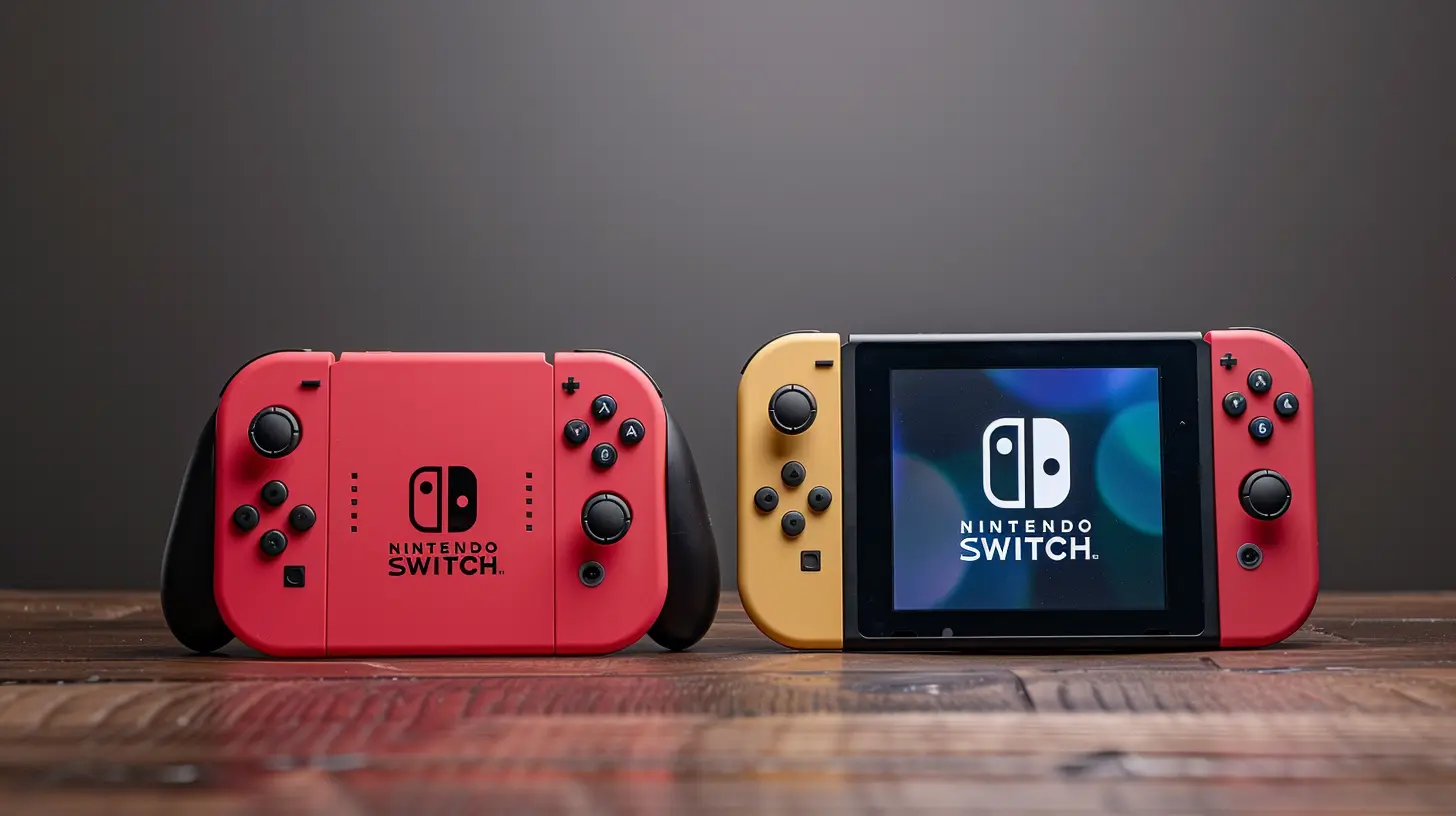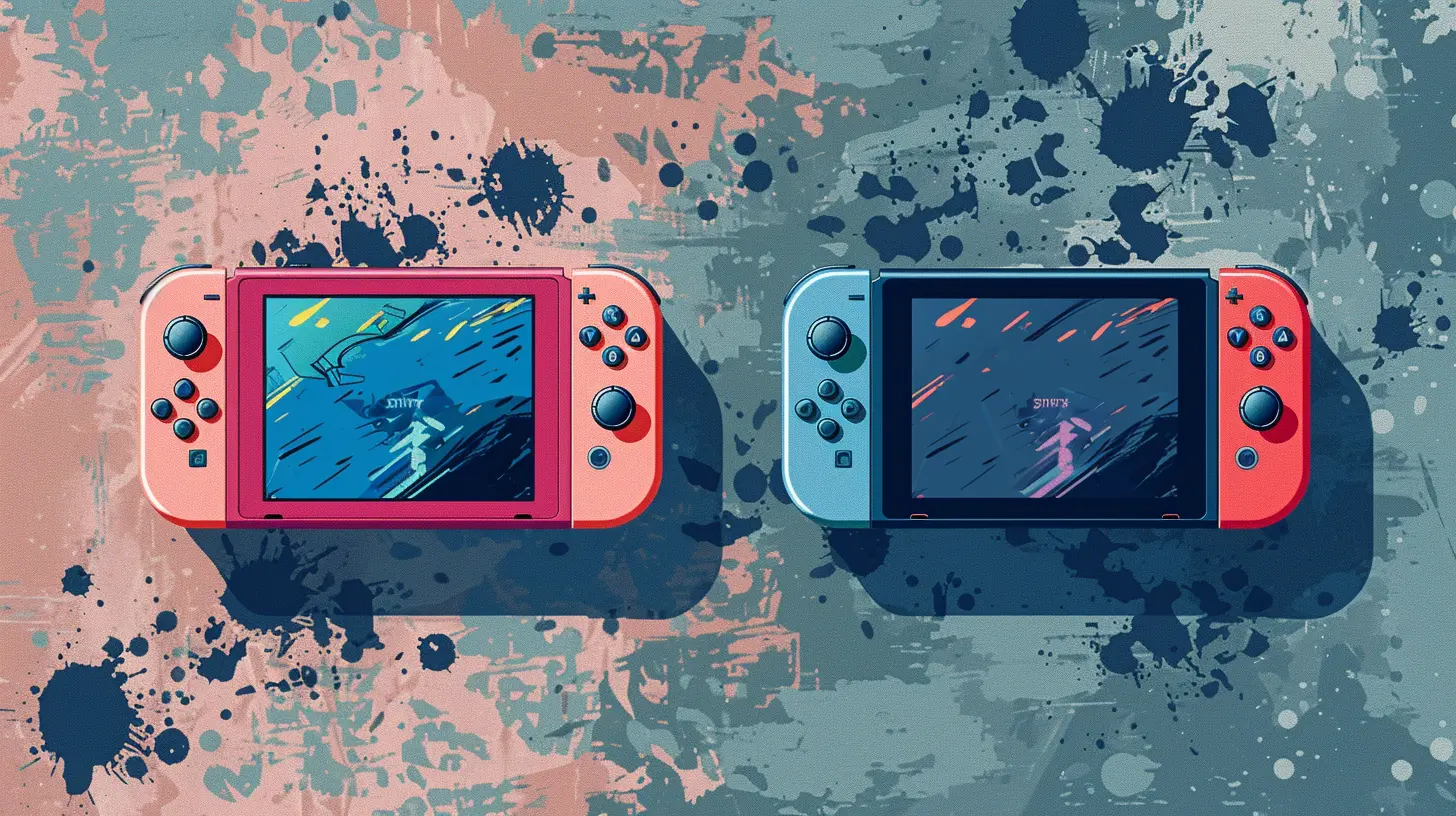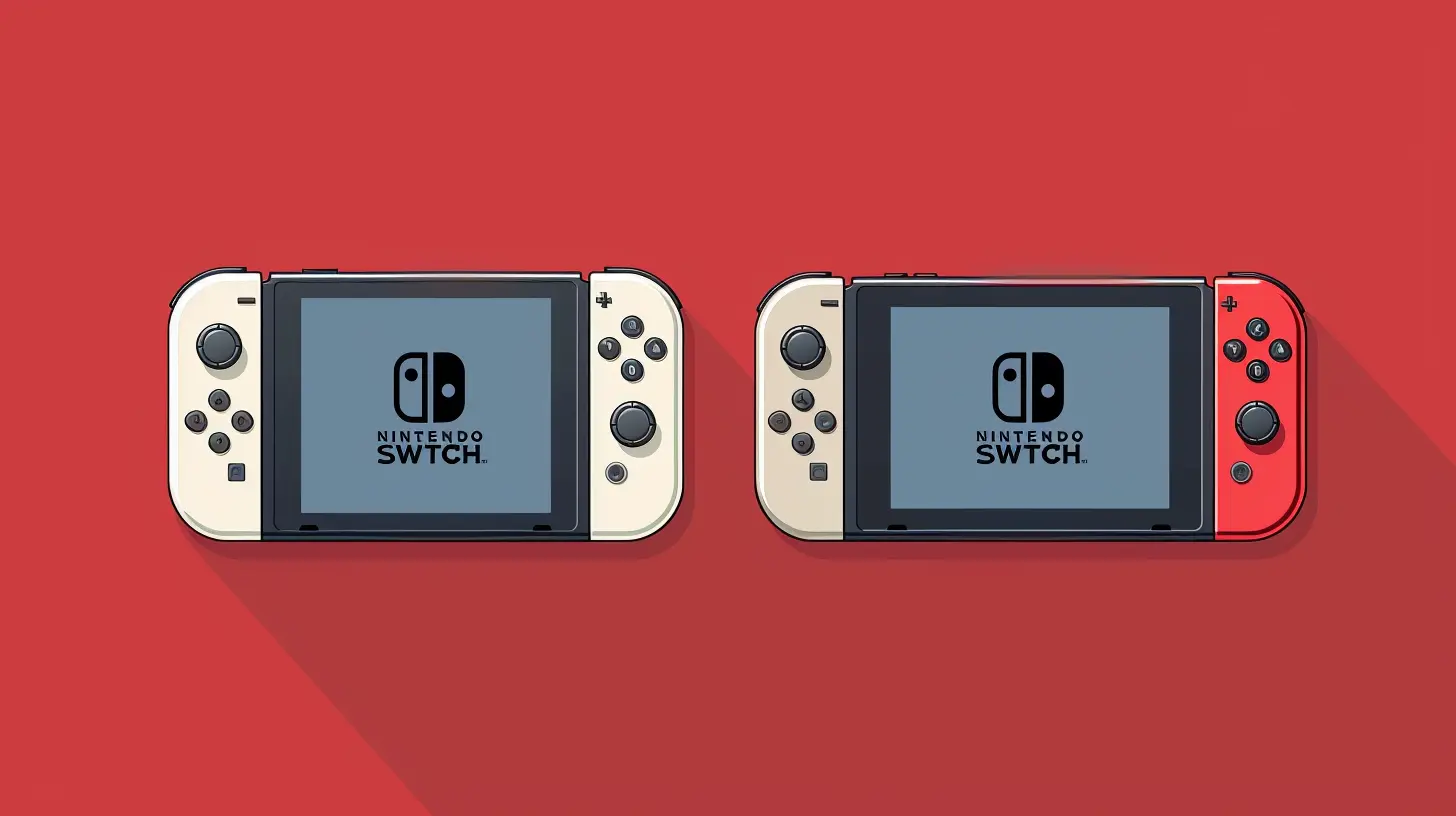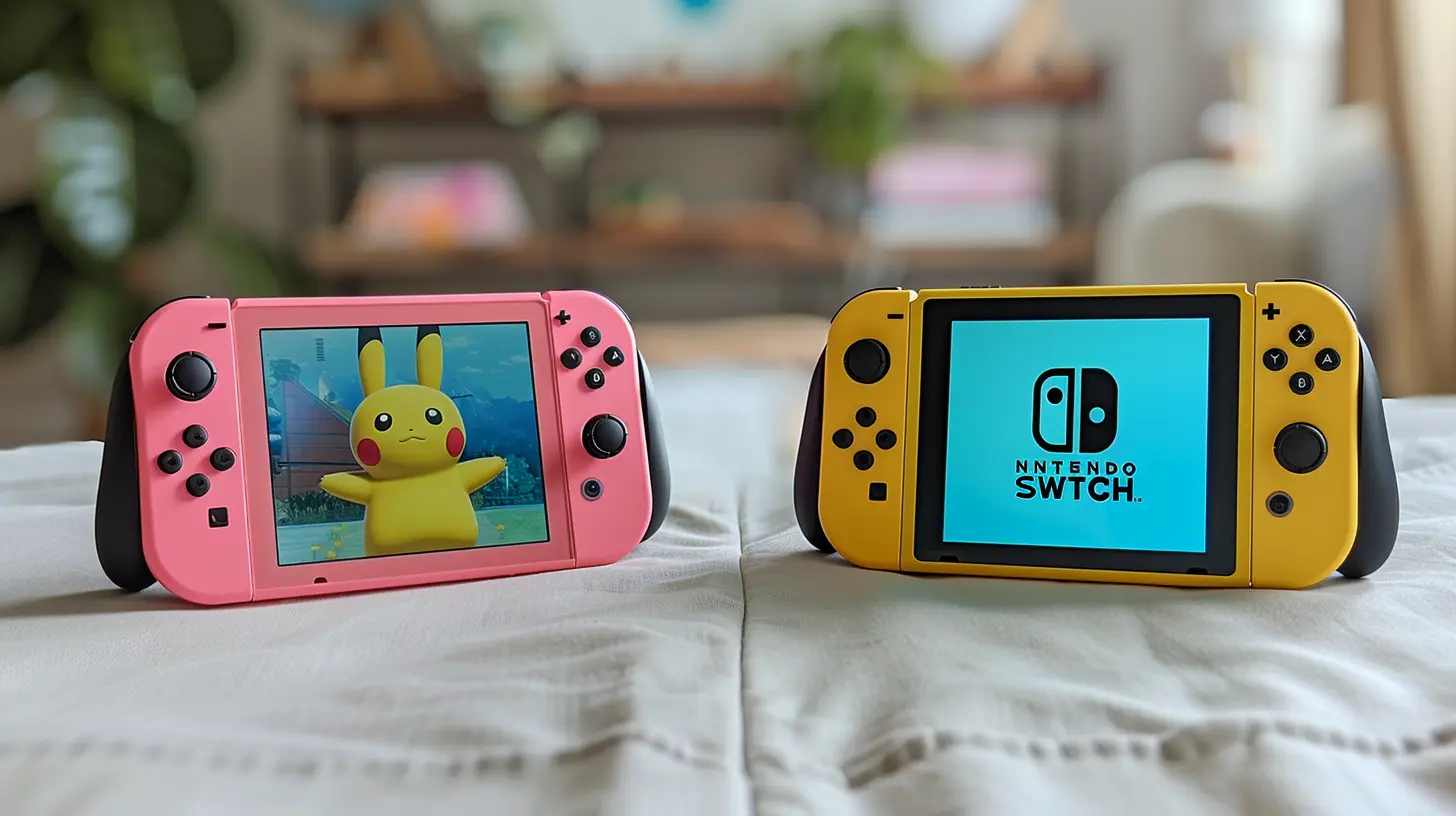Handheld vs. Console: Where Does the Nintendo Switch Fit?
1 June 2025
When you hear the term "Nintendo Switch," what immediately comes to mind? Is it a portable gaming device you can whip out during your lunch break? Or is it the sleek console you dock in your living room for big-screen adventures? That's the thing. The Nintendo Switch doesn’t fit neatly into the traditional categories of "handheld" or "console." Instead, it’s carved out a unique spot for itself, and honestly—it’s kind of genius.
But hey, let’s break it all down. Where exactly does the Nintendo Switch fit when it comes to handhelds and consoles? Sit tight. We’re diving right in.
A Quick Look at Handhelds and Consoles
Before we figure out where the Nintendo Switch fits, let's rewind a little. Handheld gaming systems and consoles have been staples of the gaming world for years, but they serve pretty different purposes.What Makes a Handheld a Handheld?
Handheld gaming devices are all about portability. Think Game Boy, PSP, or even the Nintendo DS. These are the kind of gadgets you toss in your backpack and pick up whenever you have free time. They’re compact, they’ve got built-in screens, and their battery life usually lasts long enough to get you through a boring commute or a flight.The focus here? Convenience and on-the-go gaming. Sure, the graphics are usually not as jaw-dropping as their console counterparts, but who cares? You’re gaming at the bus stop, not competing in an eSports stadium.
Consoles: The Home Base for Gamers
Consoles are a whole different beast. PlayStations, Xboxes, and Nintendo’s own previous big hitters like the GameCube or the Wii are designed to stay in one spot (aka your living room). They’re bigger, more powerful, and focus on delivering top-tier graphics and gameplay on a TV screen.The downside? You’re tethered to a power outlet and, let’s face it, the couch. Want to game on your lunch break? Sorry, no can do unless you lug a TV and your console to the office.
Enter the Nintendo Switch: Best of Both Worlds
Now here’s where the Switch shrugs and says, “Why not both?” It’s portable. It’s powerful. It has games that look stunning on a big screen and work just as well when you’re lying in bed. The Nintendo Switch wasn’t the first hybrid console concept ever, but it’s the one that nailed the execution.Let’s break down why the Switch doesn’t just fit into either category but redefines them entirely.
1. Portability Without Compromise
One of the Switch’s biggest selling points is its "play anywhere" philosophy. You’re not tied to your living room; you can literally take your Switch to the park, the doctor’s office, or heck, even to the bathroom (hey, we’re all guilty). It’s like having a handheld powerhouse in your pocket—or at least your backpack.But here’s the kicker: unlike traditional handhelds, the Switch doesn’t sacrifice quality for portability. Titles like The Legend of Zelda: Breath of the Wild or Super Mario Odyssey look just as stunning on the Switch’s small screen as they do on your giant 4K TV. That’s an achievement in itself.
2. Dock-and-Play Flexibility
Then there’s the dock. Pop the Switch into that bad boy, and boom—instant console mode. No extra steps, no complicated syncing. It’s seamless, and it works like magic. Suddenly, that portable device in your hands transforms into a full-blown gaming console ready for multiplayer action with friends.The game-changer? You don’t feel like you’re compromising. Whether you’re playing handheld or docked, the experience is consistent. It’s like the Switch puts on a suit and tie when docked and kicks back in jeans when it’s portable. Two forms, same core.
3. Local Multiplayer? Handhelds Can’t Compete
While handheld systems like the Nintendo DS had multiplayer modes, they weren’t exactly built for full-blown couch co-op sessions. Let’s be honest: passing around a single DS wasn’t really a thing. The Switch flips the script with its detachable Joy-Con controllers.
Imagine this: you’re on a long train ride with a friend. Out comes the Switch. You hand over a Joy-Con, and suddenly, you’re head-to-head in Mario Kart. That’s not just innovation—it’s a social gaming revolution.
4. Power vs. Graphics: A Balanced Trade-off
Let’s address the elephant in the room: the Nintendo Switch isn’t trying to compete with the graphical powerhouses that are the PS5 or Xbox Series X. And you know what? That’s okay. You’re not buying a Switch because you want 8K resolution or hyper-realistic rendering. You’re buying it because you want flexibility.The Switch doesn’t focus on becoming the bleeding edge of tech—it focuses on fun. And honestly, isn’t that what gaming is all about?
5. Exclusive Titles That Work Everywhere
One thing Nintendo’s always had up its sleeve is its lineup of killer exclusives. We’re talking Animal Crossing, Zelda, Mario Kart, and Pokémon. These titles have made the Switch THE place to be for both casual players and hardcore fans.But what’s extra neat is how these games fit into the Switch’s adaptability. You can grind for bells in Animal Crossing from the comfort of your couch and then seamlessly take that island life on a road trip. How many systems let you do that without skipping a beat?
Okay, But Where Does the Switch Fit?
Here’s the thing: the Nintendo Switch doesn’t fit neatly into either the “handheld” or “console” box—and it’s not supposed to. It’s the middle ground, the hybrid, the chameleon of gaming systems. By bridging the gap, it’s targeting a wider audience than either standalone handhelds or home consoles ever could.Nintendo wasn’t trying to create another handheld or another home console. They were trying to create something new altogether—and they succeeded. The Switch doesn’t fit anywhere because it doesn’t have to. It created its own lane.
The Future: What Does the Switch Mean for Gaming?
The success of the Nintendo Switch has already sent ripples through the gaming industry. Other companies are eyeing hybrids—just look at Valve’s Steam Deck. It’s clear that the line between handhelds and consoles is blurring, and the Switch was the one holding the eraser.Will the market move toward more hybrid devices over time? Probably, but the Switch remains in a league of its own because it’s not just about convenience or power—it’s about fun, versatility, and an experience no other device quite nails.
Final Thoughts
So, where does the Nintendo Switch fit? Honestly, it doesn’t. It’s portable, but it’s not just a handheld. It’s a console, but it’s not confined to your living room. It’s for casual gamers, hardcore fans, kids, adults—heck, anyone.Nintendo shattered the boundaries between handheld and console gaming with one sleek device. The Switch just isn’t meant to fit into anyone else’s box. Instead, it built its own, and gamers couldn’t be happier.
all images in this post were generated using AI tools
Category:
Gaming PlatformsAuthor:

Tayla Warner
Discussion
rate this article
3 comments
Remi Gibson
The Switch brilliantly blends handheld and console gaming experiences seamlessly.
June 15, 2025 at 2:28 AM

Tayla Warner
Thank you! The Switch truly redefines gaming by offering the best of both worlds, making it a unique hybrid experience.
Drift Thornton
The Nintendo Switch brilliantly bridges the gap between handheld and console gaming, offering flexibility and innovative features. Its unique hybrid design redefines gaming experiences, appealing to a wide range of players.
June 5, 2025 at 3:23 AM

Tayla Warner
Thank you! The Switch indeed excels in blending the benefits of both handheld and console gaming, making it a versatile choice for diverse gamers.
Emmeline Dillon
The Nintendo Switch brilliantly blurs the lines between handheld and console gaming, offering versatility that appeals to a broad audience. However, its hybrid nature raises questions about performance and game depth compared to dedicated consoles, ultimately redefining how we perceive gaming experiences.
June 1, 2025 at 2:46 PM

Tayla Warner
Thank you for your insightful comment! The Nintendo Switch indeed redefines gaming experiences by blending handheld and console features, though its hybrid design may present challenges in performance and depth compared to traditional consoles.



